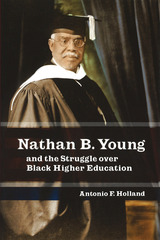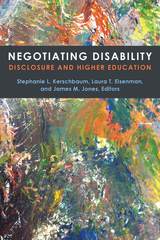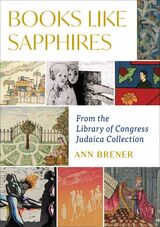109 books about Education (Higher) and 4
start with N
109 books about Education (Higher) and 4
109 books about Education (Higher)
4 start with N start with N
4 start with N start with N

Nathan B. Young and the Struggle over Black Higher Education
Antonio F. Holland
University of Missouri Press, 2006
At the turn of the twentieth century, African Americans eager to improve their lives through higher education were confronted with the divergent points of view of two great leaders: Booker T. Washington advocated vocational training, while W. E. B. Du Bois stressed the importance of the liberal arts. Into the fray stepped Nathan B. Young, who, as Antonio Holland now tells, left a lasting mark on that debate.
Born in slavery in Alabama, Young followed a love of learning to degrees from Talladega and Oberlin Colleges and a career in higher education. Employed by Booker T. Washington in 1892, he served at Tuskegee Institute until conflict with Washington’s vocational orientation led him to move on. During a brief tenure at Georgia State Industrial College under Richard R. Wright, Sr., he became disillusioned by efforts of whites to limit black education to agriculture and the trades. Hired as president of Florida A&M in 1901, he fought for twenty years to balance agricultural/vocational education with the liberal arts, only to meet with opposition from state officials that led to his ouster.
This principled educator finally found his place as president of Lincoln University in Missouri in 1923. Here Young made a determined effort to establish the school as a standard institution of higher learning. Holland describes how he campaigned successfully to raise academic standards and gain accreditation for Lincoln’s programs—successes made possible by the political and economic support of farsighted members of Missouri’s black community.
Holland shows that the great debate over black higher education was carried on not only in the rhetoric of Washington and Du Bois but also on the campuses, as Young and others sought to prepare African American students to become thinkers and creators. In tracing Young’s career, Holland presents a wealth of information on the nature of the education provided for former slaves and their descendents in four states—shedding new light on the educational environment at Oberlin and Tuskegee—and on the actions of racist white government officials to limit the curriculum of public education for blacks.
Although Young’s efforts to improve the schools he served were often thwarted, Holland shows that he kept his vision alive in the black community. Holland’s meticulous reconstruction of an eventful career provides an important look at the forces that shaped and confounded the development of black higher education during traumatic times.
[more]

Negotiating Disability
Disclosure and Higher Education
Stephanie L. Kerschbaum, Laura T. Eisenman, and James M. Jones, Editors
University of Michigan Press, 2017
Disability is not always central to claims about diversity and inclusion in higher education, but should be. This collection reveals the pervasiveness of disability issues and considerations within many higher education populations and settings, from classrooms to physical environments to policy impacts on students, faculty, administrators, and staff. While disclosing one’s disability and identifying shared experiences can engender moments of solidarity, the situation is always complicated by the intersecting factors of race and ethnicity, gender, sexuality, and class. With disability disclosure as a central point of departure, this collection of essays builds on scholarship that highlights the deeply rhetorical nature of disclosure and embodied movement, emphasizing disability disclosure as a complex calculus in which degrees of perceptibility are dependent on contexts, types of interactions that are unfolding, interlocutors’ long- and short-term goals, disabilities, and disability experiences, and many other contingencies.
[more]

The New Buffalo
The Struggle for Aboriginal Post-Secondary Education in Canada
Blair Stonechild
University of Manitoba Press, 2006
Post-secondary education, often referred to as “the new buffalo,” is a contentious but critically important issue for First Nations and the future of Canadian society. While First Nations maintain that access to and funding for higher education is an Aboriginal and Treaty right, the Canadian government insists that post-secondary education is a social program for which they have limited responsibility. In The New Buffalo, Blair Stonechild traces the history of Aboriginal post-secondary education policy from its earliest beginnings as a government tool for assimilation and cultural suppression to its development as means of Aboriginal self-determination and self-government. With first-hand knowledge and personal experience of the Aboriginal education system, Stonechild goes beyond merely analyzing statistics and policy doctrine to reveal the shocking disparity between Aboriginal and Canadian access to education, the continued dominance of non-Aboriginals over program development, and the ongoing struggle for recognition of First Nations run institutions.
[more]

Notes from Home
Jonna McKone
Rutgers University Press, 2021
Notes from Home weaves a tapestry of personal stories from a group of youth who have experienced family insecurity during childhood. At Rutgers University, the Price Family Fellows Program provides financial, emotional, and academic support for students who seek to steer their own narratives and achieve their dreams through education. Eight graduates of the program now share reflections, photographs, and memories in search of new, often surprising meanings of home and family.
Through portraiture, oral history, writing, and family archives, the contributors explore childhood, geography, immigration, education, and family relationships, recovering misunderstood or overlooked moments. In the process of making this work, the group found old family photos, returned to sites of significance, and made new friendships, discovering the transformational potential of this kind of storytelling to reframe hardship, loss, and uncertainty. In the words of one contributor, “I felt like this process was a necessary step that allowed me to acknowledge and comprehend what I was experiencing at the time. It allowed me to create a more coherent understanding that I am who I am because of my past and because I was the one who had control of molding my own, better path.” Each chapter, encompassing one person’s story, is strikingly unique in its vision and approach.
Through portraiture, oral history, writing, and family archives, the contributors explore childhood, geography, immigration, education, and family relationships, recovering misunderstood or overlooked moments. In the process of making this work, the group found old family photos, returned to sites of significance, and made new friendships, discovering the transformational potential of this kind of storytelling to reframe hardship, loss, and uncertainty. In the words of one contributor, “I felt like this process was a necessary step that allowed me to acknowledge and comprehend what I was experiencing at the time. It allowed me to create a more coherent understanding that I am who I am because of my past and because I was the one who had control of molding my own, better path.” Each chapter, encompassing one person’s story, is strikingly unique in its vision and approach.
[more]
READERS
Browse our collection.
PUBLISHERS
See BiblioVault's publisher services.
STUDENT SERVICES
Files for college accessibility offices.
UChicago Accessibility Resources
home | accessibility | search | about | contact us
BiblioVault ® 2001 - 2024
The University of Chicago Press









